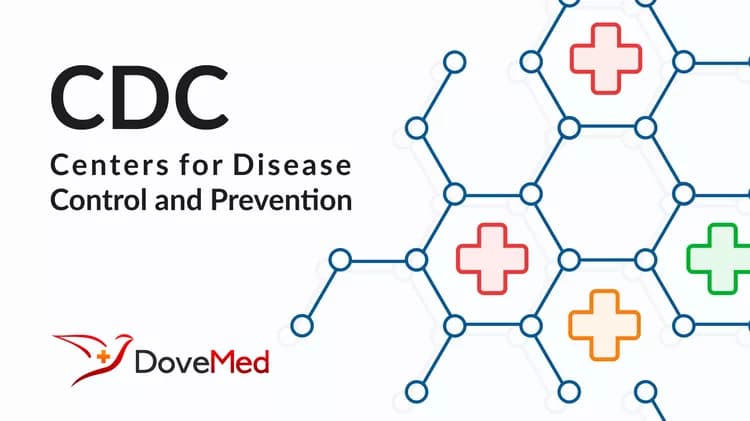
Teen Birth Rates Fall Nearly 50 Percent Among Hispanic And Black Teens, Dropping National Teen Birth Rate To An All-Time Low
Teen birth rates fall nearly 50 percent among Hispanic and black teens, dropping national teen birth rate to an all-time low
But important gaps remain for many communities
Births among Hispanic and black teens have dropped by almost half since 2006, according to a new analysis published by CDC. This mirrors a substantial national decline: births to all American teenagers have dropped more than 40 percent within the past decade. Despite this progress, key challenges persist for many communities, according to the report.
While dramatic declines among Hispanic and black teens (51 percent and 44 percent, respectively) have helped reduce gaps, birth rates remain twice as high for these teens nationally compared with white teens. Published today in CDC’s Morbidity and Mortality Weekly Report, the new analysis highlights key community- and state-level patterns:
Dramatic racial and ethnic differences: In some states, birth rates among Hispanic and black teens were more than three times as high as those of whites.
Socioeconomic and education gaps: Higher unemployment and lower income and education are more common in communities with the highest teen birth rates, regardless of race.
Key in-state differences: In some states with low overall birth rates, pockets of high birth rates exist in some counties.
Regional patterns: Counties with higher teen birth rates were clustered in southern and southwestern states.
“The United States has made remarkable progress in reducing both teen pregnancy and racial and ethnic differences, but the reality is, too many American teens are still having babies,” said CDC Director Tom Frieden, M.D., M.P.H. “By better understanding the many factors that contribute to teen pregnancy we can better design, implement, evaluate, and improve prevention interventions and further reduce disparities.”
In the new report, CDC researchers analyzed national- and state-level data from the National Vital Statistics System (NVSS) to examine trends in births to American teens ages 15 to 19 years between 2006 and 2014. County-level NVSS data for 2013 and 2014 also offer a point-in-time picture of local birth rates. To better understand the relationship between key social and economic factors and teen birth rates, researchers examined data from the American Community Survey between 2010 and 2014.
Researchers highlight the importance of teen pregnancy prevention interventions that address socioeconomic conditions like unemployment and lower education levels, for reducing disparities in teen birth rates. State and community leaders can use local data to better understand teen pregnancy in their communities and to direct programs and resources to areas with the greatest need.
“These data underscore that the solution to our nation’s teen pregnancy problem is not going to be a one-size-fits-all – teen birth rates vary greatly across state lines and even within states,” said Lisa Romero, Dr.PH., a health scientist in CDC’s Division of Reproductive Health and lead author of the analysis. “We can ensure the success of teen pregnancy prevention efforts by capitalizing on the expertise of our state and local public health colleagues. Together, we can work to implement proven prevention programs that take into account unique, local needs.”
Research has shown that teen pregnancy and childbirth cost U.S. taxpayers an estimated $9 billion each year and have negative health and social consequences.
Preventing teen pregnancy remains one of CDC’s top priorities and the agency is working on a number of fronts. One key component of this work is encouraging community-centered efforts. For example, between 2010 and 2015, CDC and the HHS Office of Adolescent Health (OAH) collaborated to demonstrate the effectiveness of innovative, multicomponent, communitywide initiatives in reducing rates of teen pregnancy and births in communities with the highest rates, with a focus on reaching African American and Latino or Hispanic young people ages 15 to 19 years. Preliminary outcome data indicate that the community-wide initiatives were successful – each community increased the number of teens who received evidence-based teen pregnancy prevention interventions and reproductive health services, as well as the percentage of teens who received moderately or highly effective contraceptive methods, including long-acting reversible contraception. Many of those strategies are now being implemented across the U.S. through 84 new five-year teen pregnancy prevention grants supported by OAH.
May is Teen Pregnancy Prevention Month. Communities can use this new information about teen pregnancy in the U.S. to inform the dialogue about pregnancy and its health and social consequences for youth.
For more information and resources on this research, please visit: Reduced Disparities in Birth Rates among Teens Aged 15–19 Years in the United States
###
U.S. DEPARTMENT OF HEALTH AND HUMAN SERVICES
Related Articles
Test Your Knowledge
Asked by users
Related Centers
Related Specialties
Related Physicians
Related Procedures
Related Resources
Join DoveHubs
and connect with fellow professionals

0 Comments
Please log in to post a comment.